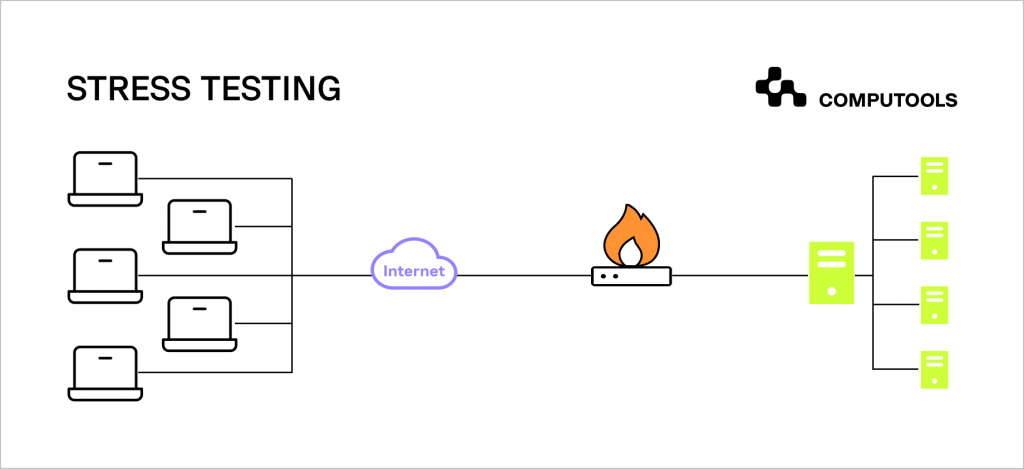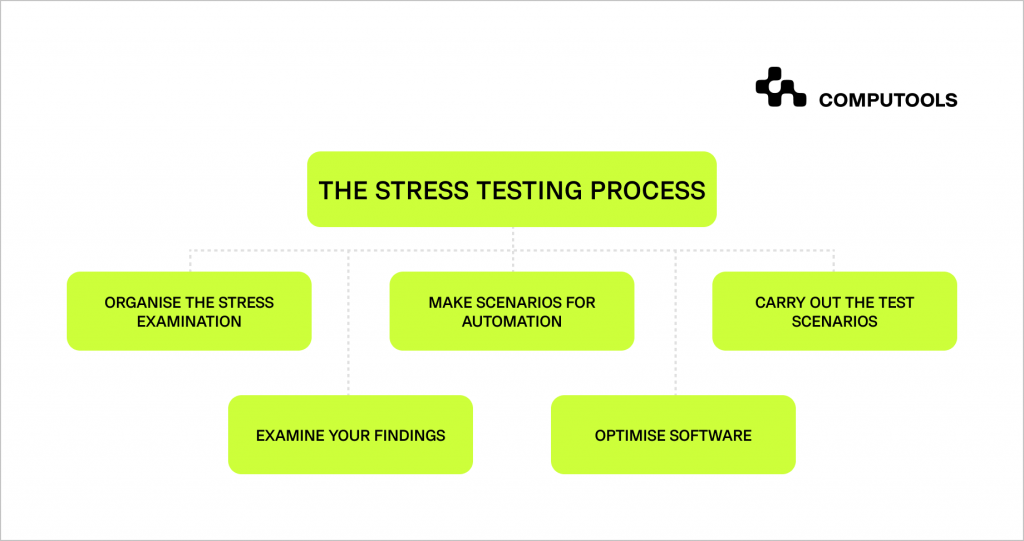Scalability and reliability are critical in today’s digital economy, which demands high-load applications and systems. Since the pandemic has caused entire company domains to migrate online, they are actually even more crucial now.
Software development processes are put to the test by the increase in user activity and data quantities, and businesses find their high-load applications put to the test.
Developers are able to lessen or eliminate common snags and mistakes by knowing the difficulties involved in creating high-load applications and systems. This guarantees that their solutions satisfy the demands of the constantly expanding digital world.
Creating a high-load application that works takes a different strategy from what is typically used. In this post, I examine the methodical approach to being ready for developing high-load applications and systems.
Here we will cover what is stress testing, including its definition, many forms, methods and resources available.
What is Software Stress Testing?

Software testing, also known as stress testing, is used to ensure that programs are resilient and dependable. It involves rigorous testing in harsh environments, pushing software to its absolute limit.
A crucial step in the testing process is software load testing, which looks for flaws, vulnerabilities, and possible failures that can arise from putting a system under stress or unfavourable circumstances.
Software stress testing simulates heavy user traffic, resource limitations, and severe data entry and can yield insightful information about how well an application performs.
Types of Stress Testing
Software stress testing involves simulating various events to push the software beyond its typical capabilities. This entails checking the system’s general stability, bandwidth, memory usage, and reaction time.
By purposefully overloading the system, testers can find bottlenecks, memory leaks, performance degradation, and other problems that may arise under pressure.
There are five types of software stress testing to finetune a system or application:
1. Distributed Stress Testing
A stress server’s responsibility is to disperse a set of tests to each client system engaged in stress testing and monitor how well each system performs.
The technique involves the client contacting the server first, followed by the server accepting the client, registering its name, and initiating the distribution of test scripts.
When the signals stop, the server indicates that the found bugs must be fixed and determines that more research into the system is necessary.
2. Application Stress Testing
This testing technique’s primary goals are to find data locking flaws and problems with network and application performance.
3. Transactional Stress Testing
Every transaction that occurs between one or more computers or apps is subject to this testing methodology. System optimisation and in-depth system modification are the primary goals of this technique.
4. Systemic Stress Testing
With the help of this multiple stress testing technique, we may test numerous systems on a single server concurrently. The purpose of this method is to find flaws.
5. Exploratory Stress Testing
The best method for stress testing a system is to use settings and parameters that are not typical of real-world situations. It is useful for identifying flaws in peculiar circumstances.
The Stress Testing Process

To take the stress test, follow these steps:
1. Organise the stress examination
Determine the performance indicators, thresholds that will be measured, and the test’s objectives and aims.
Determine the target environment and infrastructure for stress testing in software engineering, as well as the stress scenarios and workload models that will be modelled.
2. Make scenarios for automation
To replicate the intended stress scenarios, create or set up automation scenarios. This includes creating test cases that reflect various stress levels and conditions, building the test environment, putting up test data, and conducting stress testing.
Make sure the required stress circumstances are appropriately reflected in the automation scenarios.
3. Carry out the test scenarios
Set up the infrastructure and test environment for stress testing, then use robotic process automation to run automation scenarios that mimic stress situations.
Throughout the stress test, track and measure metrics related to system performance. Make logs, reports, and data for additional analysis after every test.
4. Examine your findings
Determine any performance bottlenecks, malfunctions, or anomalies in the system by analyzing the performance metrics and measurements gathered throughout the stress test.
Finally, analyze the underlying reasons of any performance problems and pinpoint areas for improvement by comparing the observed performance against performance targets and thresholds.
5. Optimise software
Prioritise and address the performance issues that were found based on the study of the software testing services.
Make the required code modifications, configuration adjustments, or infrastructure enhancements to maximise system performance.
Rerunning load testing is another way to confirm that optimisations are working.
Implementing Stress Testing Techniques
I’d like to suggest a strategy that guarantees stress testing initiatives’ efficiency, precision, and dependability.
You may lower risk, enhance performance, increase user satisfaction, and obtain insightful knowledge about how your software systems behave under pressure, if you use tools for stress testing.
1. To guarantee targeted and effective software stress testing, clearly outline the non-functional criteria, areas of focus, and specified performance measures.
2. Establish a test environment that is an exact replica of the production system, down to the hardware, software, network configurations, and data quantities.
3. Use stress testing solution models that closely resemble real user behavior and realistic workloads. Consider data volumes, peak load scenarios, transaction rates, and the number of concurrent users.
4. As testing continues, evaluate test outcomes, pinpoint areas for improvement, and adjust test workloads and scenarios.
5. First, deal with the most important bottlenecks and performance constraints to guarantee quick improvement and more consistent system performance.
Why Businesses Can’t Afford to Skip Stress Testing
QA stress testing assesses how software resources, including CPU, memory, disc I/O, network bandwidth, and database performance, are used in high-load circumstances.
Through load testing, the program’s load balancing algorithms are verified to effectively divide the burden among several servers or components.
Business software stress testing may incorporate security-related scenarios to evaluate the software’s resistance to attacks under high stress and confirm the consistency and integrity of data processing and storage under pressure.
Regular stress testing as part of software development services ensures that business software remains reliable even under extreme conditions.
Choosing a Stress Testing Partner
Choosing a reliable business software stress testing partner for your business application is critical. The quality of this choice determines the efficiency of testing and the overall stability and reliability of your software product.
Pay attention to the following aspects:
1. Stress testing expertise
Your business software solutions partner should have in-depth knowledge of different stress testing methodologies and be able to choose the best approach for your specific application.
Subject matter expertise similar to yours in scope, complexity, and industry indicates your partner’s ability to address your challenges effectively.
Your partner should be familiar with industry standards and regulatory requirements to ensure your test results meet the necessary regulations.
2. A comprehensive approach to testing
Your partner should offer various testing services, including functional, load, and stress testing.
Modern tools and technologies can automate many processes and increase testing efficiency, ensuring that all aspects of your software are thoroughly evaluated.
3. Understanding your business objectives
Your partner should be able to focus their efforts on achieving your goals, adapt to changing requirements, and respond quickly to emerging issues.
This alignment ensures their efforts are always in line with your business objectives.
The partner should provide detailed reports on the tests conducted, including results, identified problems and recommendations. A partner’s readiness for open dialogue and discussion of test results is the key to successful cooperation.
Ready to improve the reliability of your software? Our experts can help with comprehensive stress testing. Contact us at info@computools.com.

Computools
Software Solutions
Computools is a digital consulting and software development company that delivers innovative solutions to help businesses unlock tomorrow.









“Computools was selected through an RFP process. They were shortlisted and selected from between 5 other suppliers. Computools has worked thoroughly and timely to solve all security issues and launch as agreed. Their expertise is impressive.”